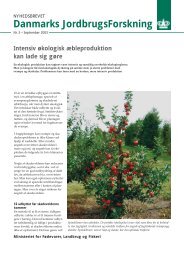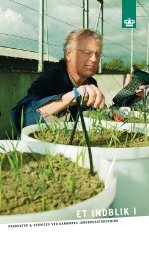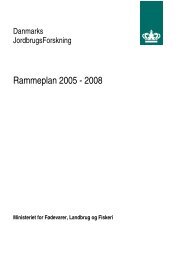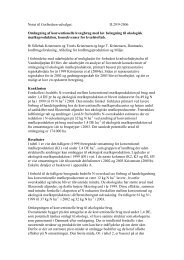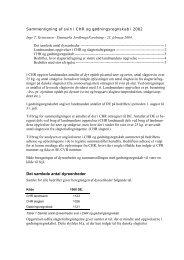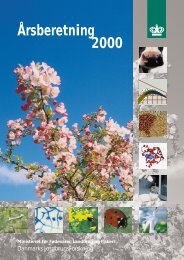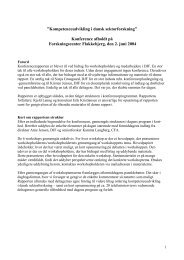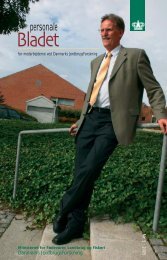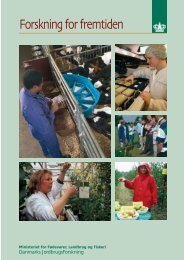Reproduction performances and conditions of group-housed non ...
Reproduction performances and conditions of group-housed non ...
Reproduction performances and conditions of group-housed non ...
You also want an ePaper? Increase the reach of your titles
YUMPU automatically turns print PDFs into web optimized ePapers that Google loves.
- Paper IV -<br />
three weeks after mating respectively. Ai <strong>and</strong> Bi(j) are the normal distributed r<strong>and</strong>om effects<br />
<strong>of</strong> herd <strong>and</strong> batch nested within herd.<br />
All covariates are represented in the last expression in Eq. (1). x1-7ijk is 1. the lactation<br />
length transformed by the natural logarithm, 2. the back fat at weaning, 3. the back fat gain<br />
(mm/week), 4. <strong>and</strong> 5. the number <strong>of</strong> skin lesions at mating <strong>and</strong> three weeks after mating<br />
transformed by the natural logarithm, 6. the number <strong>of</strong> aggressions <strong>and</strong> 7. % not eating<br />
transformed by square root respectively. β1-7 are regression parameters.<br />
The interactions between parity <strong>group</strong> <strong>and</strong> the indicators were also included in the model<br />
one by one but for the sake <strong>of</strong> simplicity these are not included in Eq. (1).<br />
For pregnancy chance after first mating <strong>and</strong> culling risk, E(Yijk) corresponds to logit to the<br />
probability <strong>of</strong> the observed outcome, pijk. For the interval from weaning to first mating <strong>and</strong><br />
litter size, Yijk ~ N(E(Yijk), σijk 2 ) whereas for pregnancy chance <strong>and</strong> culling risk, Yijk ~ B(1,<br />
pijk).<br />
Some exceptions were made to the general modelling strategy. The model for effect on litter<br />
size <strong>and</strong> pregnancy chance included the additional covariate, weaning to first mating<br />
interval. Similarly, when analysing interval from weaning to first mating, sows mated later<br />
than eight days after weaning (26 sows) were excluded from the analysis, <strong>and</strong> only covariates<br />
measured at weaning <strong>and</strong> mating were included in the model. In an experimental study,<br />
sows with back fat less than 10 mm were more predisposed to culling compared to fatter<br />
sows (Young et al. 1990). Therefore, when analysing risk <strong>of</strong> culling the analysis was repeated<br />
with the continuous covariate back fat at weaning categorised into a discrete variable<br />
with two levels: back fat category (




